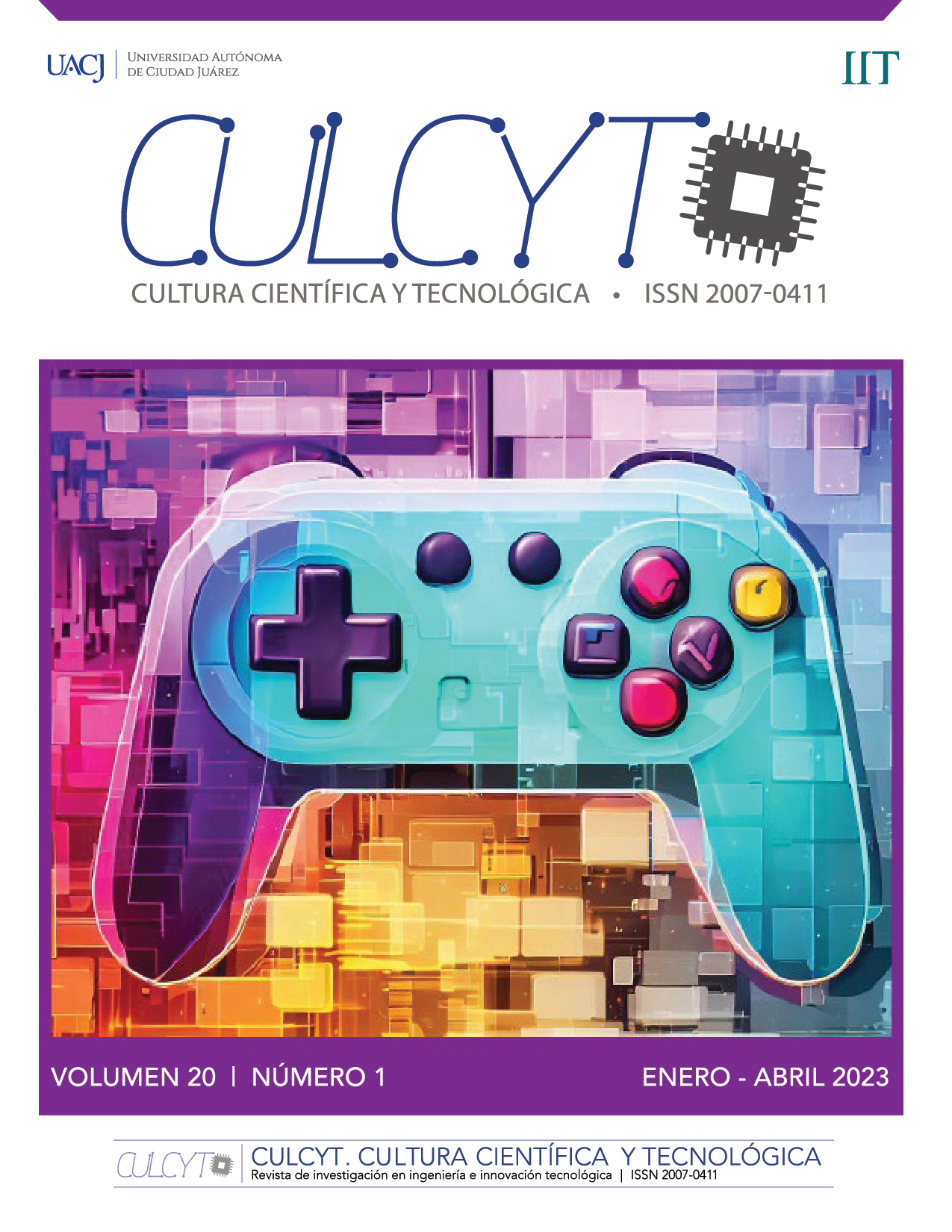Design and fabrication of a bioreactor for the proliferation of mesenchymal stem cells
DOI:
https://doi.org/10.20983/culcyt.2023.1.2.4Resumen
Currently, the number of organ donors is low and there are different methods to deal with this situation, including cell cultures, decellularization and bioreactors, which play an important role in helping the required processes to be carried out in a faster and more optimized way. The objective of this work is to make the cell proliferation process efficient using a bioreactor as an alternative, in which flow simulations can be made to previously analyze how it works. The radial flow hydraulic circuit was designed and simulated in SOLIDWORKS solving Navier-Stokes equations to verify that we have a non-turbulent laminar flow and simulate cell detachment without damaging the cell matrices. The design was printed with additive printing techniques, using photosensitive resin. Bioreactors also play a part in tissue engineering, as they allow for changes that can be monitored and reproduced in particular environmental factors. This article shows the successful design of a bioreactor to proliferate mesenchymal stem cells printed and subjected to simulations, whose results lead to the conclusion that there is non-turbulent laminar flow in the behavior of the system without subjecting the cells to a possible stress that causes damage.
Descargas
Citas
C. A. V. Rodrigues T. G. Fernandes, M. M. Diogo, C. L. da Silva, and J. M. S. Cabral, “Stem cell cultivation in bioreactors,” Biotechnology Advances, vol. 29, no. 6, pp. 815-829, 2011, doi: 10.1016/j.biotechadv.2011.06.009.
X. Wei, X. Yang, Z.-P. Han, F.-F. Qu, L. Shao, and Y.-F. Shi, “Mesenchymal stem cells: a new trend for cell therapy,” Acta Pharmacol Sin, vol. 34, p. 747-754, 2013, doi: 10.1038/aps.2013.50.
H. Le, W. Xu, X. Zhuang, F. Chang, Y. Wang, and J. Ding, “Mesenchymal stem cells for cartilage regeneration,” J Tissue Eng, vol. 11, 2020, doi: 10.1177/2041731420943839.
M. Zhang, A. Zheng, Z. C. Zheng, and Z. M. Wang, “A Multiphase Flow Simulation for a Cells-on-a-Chip Device,” in Proc. of the ASME 2016 Int. Mechanical Engineering Congr. and Exposition. Volume 7: Fluids Engineering, Phoenix, Arizona, USA. November 11–17, doi: 10.1115/IMECE2016-66126.
M. Djukelic, A. Wixforth, and C. Westerhausen, “Influence of neighboring adherent cells on laminar flow induced shear stress in vitro-A systematic study,” Biomicrofluidics, vol. 11, no. 2, 024115, Apr. 6, 2017, doi: 10.1063/1.4979295.
R. Shah, C. Chah, and H.-S. Park, “Proposed Design Model of Single use Bioreactor for Mesenchymal Stem Cells Proliferation,” Procedia CIRP, vol. 41, pp. 382-386, 2016, doi: 10.1016/j.procir.2015.12.127.
O. Ramírez-Fernández, E. Zúñiga-Aguilar, L. E. Gómez-Quiroz, M. C. Gutiérrez-Ruiz, and R. Godínez, “Organic-polymeric radial flow biorreactor for liver models”, Rev Mex Ing Biom, vol. 37, no. 3, pp. 165-179, Sep. 2016, doi: 10.17488/RMIB.37.3.1.
Descargas
Publicado
Cómo citar
Número
Sección
Licencia
Derechos de autor 2023 Claudia Morelia De los Santos Hernández, Odin Ramírez Fernández, Laura Castruita Ávila, Esmeralda Zuñiga Aguilar

Esta obra está bajo una licencia internacional Creative Commons Atribución-NoComercial 4.0.
Todos los contenidos de CULCYT se distribuyen bajo una licencia de uso y distribución “Creative Commons Reconocimiento-No Comercial 4.0 Internacional” (CC-BY-NC). Puede consultar desde aquí la versión informativa de la licencia.
Los autores/as que soliciten publicar en esta revista, aceptan los términos siguientes: a) los/las autores/as conservarán sus derechos de autor y garantizarán a la revista el derecho de primera publicación de su obra; y b) se permite y recomienda a los/las autores/as agregar enlaces de sus artículos en CULCYT en la página web de su institución o en la personal, debido a que ello puede generar intercambios interesantes y aumentar las citas de su obra publicada.



